Read "DTC Status" parameter.


HO2S(B1/S2) is in the rear side of Catalytic Converter to check the proper operation of catalyst. Oxygen density after the catalytic converter has to be within specific range (around 0.5V when there is no acceclation and deceleration.)If the oxygen density changes in accordance with HO2S(B1/S1), it means the poor performance of catalytic converter.
If the internal resistance of heater is over the threshold value under enable conditins, PCM sets DTC P0141.
Item | Detecting Condition | Possible Cause |
DTC Strategy | ● Heater current check | ● Poor connection ● Open or short to ground in signal circuit ● HO2S (B1S2) |
Enable Conditions | ● Exhaust gas temperature (modeled) 200∼550℃ ● Intake air temperature 〉 -6℃ ● Battery voltage 10.7∼16.1V | |
Threshold Value | ● Internal resistance 〉 threshold f (cat. temp., heater power) | |
Diagnostic Time | ● Above 6 sec | |
MIL ON Condition | ● 2 driving cycle |
※ B1S2 : upstream oxygen sensor / B1S2 : downstream oxygen sensor
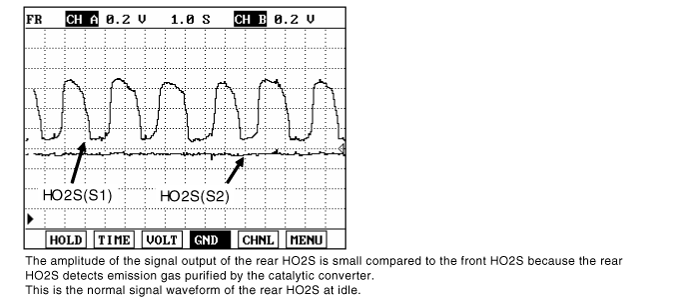
ITEM | Specification |
Heater Resistance | Approx. 9.0 (20℃) |
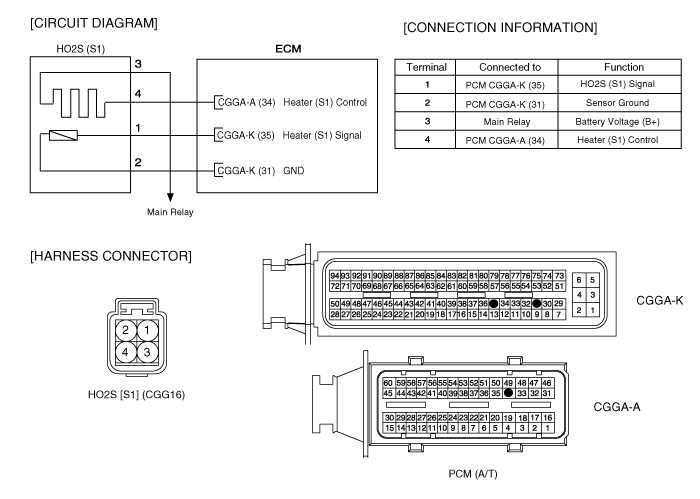
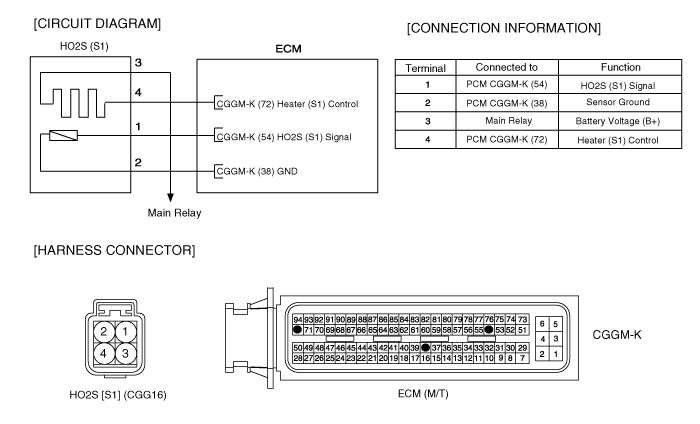
Connect scantool to Data Link Connector(DLC).
IG "ON".
Select "Diagnostic Trouble Codes(DTCs)" mode, and then Press F4(DTAL) to check DTC'sinformation from the DTCs menu
Confirm that "DTC Readiness Flag" indicates "Complete". If not, drive the vehicle within conditionsnoted in the freeze frame data or enable conditions noted in the DTC detecting condition.
Read "DTC Status" parameter.

Is parameter displayed "History(Not Present) fault"?
History fault : DTC occurred but has been cleared.
Present fault : DTC is occurring at present time.

▶ Fault is intermittent caused by poor contact in the sensor’s and/or ECM’s connector or wasrepaired and ECM memory was not cleared. Thoroughly check connectors for looseness,poor connection, bending, corrosion, contamination, deterioration, or damage.Repair or replace as necessary and then go to "Verification of Vehicle Repair" procedure.

▶ Go to "Terminal & Connector Inspection" procedure
Many malfunctions in the electrical system are caused by poor harness and terminals. Faults can also be caused by interference from other electrical systems, and mechanical or chemical damage.
Thoroughly check connectors for looseness, poor connection, bending, corrosion, contamination, deterioration, or damage.
Has a problem been found?

▶ Repair as necessary and go to "Verification of vehicle Repair" procedure.

▶ Go to " Power Circuit Inspection " procedure.
IG "OFF".
Disconnect HO2S(B1S2) connector.
IG "ON" & ENG "OFF".
Measure voltage between terminal 3 of HO2S(S2) harness connector and chassis ground.
Specification : B+
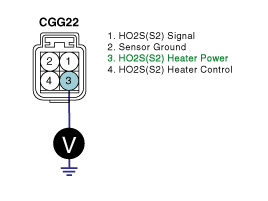
Is the measured voltage within specification?

▶ Go to "Control Circuit Inspection" procedure.

▶ Repair or replace as necessary and then, go to "Verification of Vehicle Repair" procedure.
IG "OFF".
Disconnect HO2S(B1S2) connector.
IG "ON" & ENG "OFF"
Measure voltage between terminal 4 of HO2S(S2) harness connector and chassis ground.
Specification : Approx. 3.5V
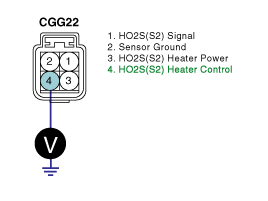
Is the measured voltage within specification?

▶ Go to "Component Inspection" procedure.

▶ Repair or replace as necessary and then, go to "Verification of Vehicle Repair" procedure.
Check Heater resistance.
IG "OFF".
Disconnect HO2S(B1S2) connector.
Measure resistance bwteen terminal 3 and 4 of HO2S(B1S2) connector.(Component Side)
ITEM | Specification |
Heater Resistance | Approx. 9.0 (20℃) |
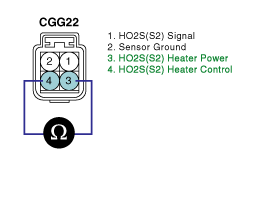
Is the measured resistance within specification?

▶ Many malfunctions in the electrical system are caused by poor harness(es) and terminals. Faults can also be caused by interference from other electrical systems, and mechanical or chemical damage. So, check poor connections and the related circuit between ECM and component thoroughly. Repair as necessary and go to "Verification of Vehicle Repair" procedure.

▶ Substitute with a known - good HO2S and check for proper operation.
▶ If the problem is corrected, replace HO2S and go to "Verification of Vehicle Repair" procedure.
After a repair, it is essential to verify that the fault has been corrected.
Connect scan tool and select "Diagnostic Trouble Codes(DTCs)" mode.
Press F4(DTAL) and confirm that "DTC Readiness Flag" indicates "Complete".
If not, drive the vehicle within conditions noted in the freeze frame data or enable conditions.
Read "DTC Status" parameter.
Is parameter displayed "History(Not Present) fault"?

▶ System performing to specification at this time. Clear the DTC.

▶ Go to the applicable troubleshooting procedure.